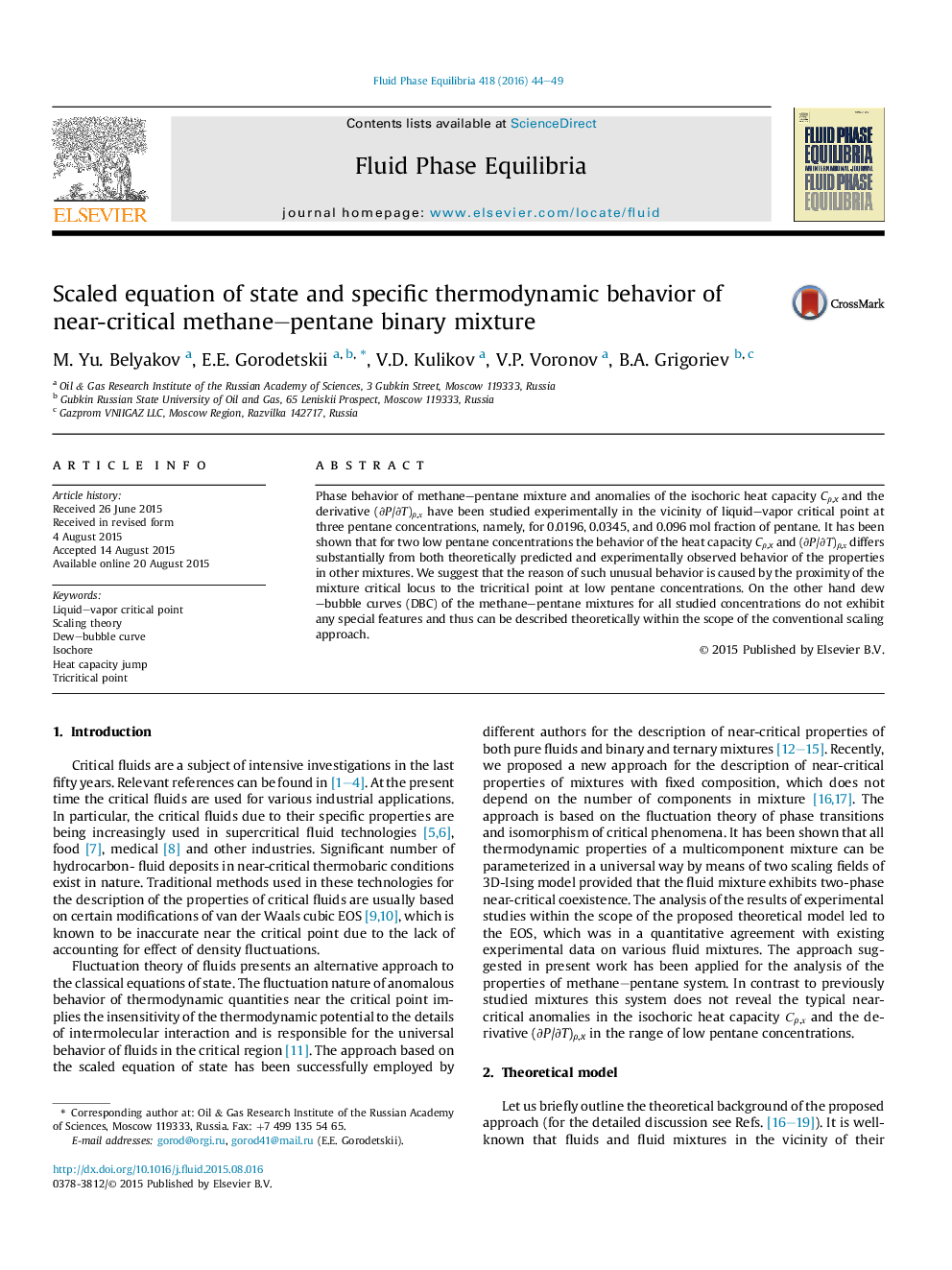| Article ID | Journal | Published Year | Pages | File Type |
|---|---|---|---|---|
| 201146 | Fluid Phase Equilibria | 2016 | 6 Pages |
•The suppression of the typical cusp-like anomalies of the isochoric heat capacity has been observed for methane–pentane mixtures with low pentane concentrations.•The unexpected thermodynamic behavior is caused by the proximity of the mixture critical points to the tricritical point.•Simplified universal dew–bubble curve equations remain valid to describe the obtained experimental data with high accuracy.•Calculated values of the mixture critical densities are in agreement with experimental results.
Phase behavior of methane–pentane mixture and anomalies of the isochoric heat capacity Cρ,x and the derivative (∂P/∂T)ρ,х have been studied experimentally in the vicinity of liquid–vapor critical point at three pentane concentrations, namely, for 0.0196, 0.0345, and 0.096 mol fraction of pentane. It has been shown that for two low pentane concentrations the behavior of the heat capacity Cρ,x and (∂P/∂T)ρ,х differs substantially from both theoretically predicted and experimentally observed behavior of the properties in other mixtures. We suggest that the reason of such unusual behavior is caused by the proximity of the mixture critical locus to the tricritical point at low pentane concentrations. On the other hand dew–bubble curves (DBC) of the methane–pentane mixtures for all studied concentrations do not exhibit any special features and thus can be described theoretically within the scope of the conventional scaling approach.
